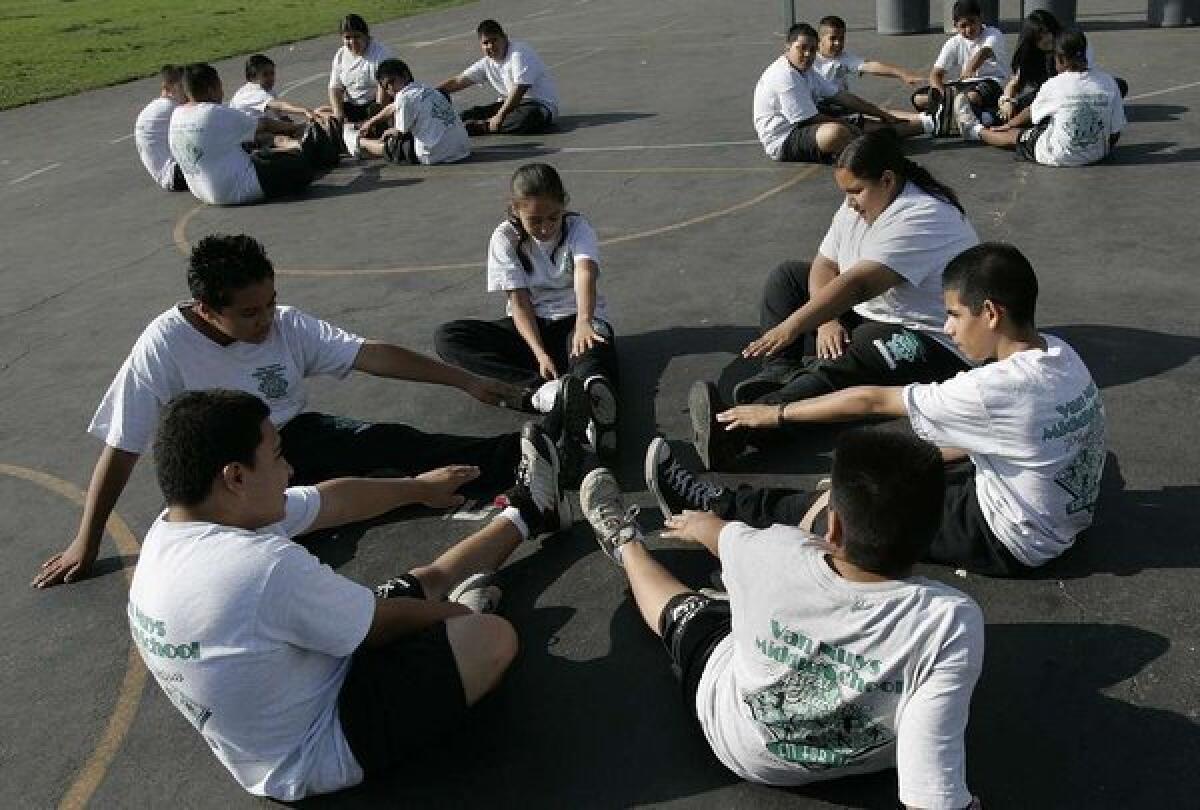Institute urges more physical activity, in and out of school

It’s common knowledge that Americans don’t get enough exercise – young Americans too. And the Institute of Medicine issued a report on Thursday calling on schools and government at all levels to make sure that all students get an hour a day of “vigorous or moderate-intensity” physical activity.
That would be a big change in schools all over the country.
The surgeon general has urged all school systems to require 150 minutes per week of physical education; as of 2006, only 3.8% of elementary schools had done so. The report notes that estimates suggest that only half of school age children are getting an hour a day of exercise – in or out of school. And in the five years after implementation of the No Child Left Behind law, evidence shows that 44% of school administrators have cut gym time in favor of reading and math.
The institute’s report, “Educating the Student Body,” calls on the U.S. Department of Education to designate physical education as a core academic subject. There are no consistent nationwide policies about gym time, and the report recommends a that 30 minutes a day in elementary school and 45 minutes in upper grades be devoted to physical education. Other time, such as recess, should be provided for physical activity as well, the report said.
Schools already provide “key services such as health screenings, immunizations and nutritious meals. Daily physical activity is as important to chidren’s health and development as these other health-related services, and providing opportunities for physical activity should be a priority for all schools, both through physical education and other options,” said Harold Kohl III, chairman of the committee that wrote the report and a professor of epidemiology and kinesiology at the University of Texas School of Public Health.
The report notes that physical activity can improve academic performance. It calls for frequent classroom breaks and says recess should not be denied as a punishment or replaced with additional instruction.
[Update, May 23, 4 p.m.: Kohl says he’s optimistic the recommendations will be taken seriously and acted upon.
“The consequences are too great to ignore,” he says.
In moving school time away from physical activity, he says, “the mistake we made is saying that they should be competing -- academics and physical actvity. … Physical activity actually complements traditional subjects and help kids learn better. It’s a false choice.”]
Other recommendations include:
-- States should revise policies for physical education as well as other programs to align with the national recommendations. Districts and schools should offer sports programs and clubs to provide opportunities for activity in and out of school.
-- Schools and districts should open facilities for recreation when school is closed.
-- Governments and urban planners should consider renovating schools in neighborhoods and changing traffic regulations to make sure the areas are safe for children to walk or bike.
-- Provide training for teachers in all grades.
-- Make sure physical activities are available to all students.
The study was sponsored by the Robert Wood Johnson Foundation. The Institute of Medicine is one of several private, nonprofit institutions that provide health policy advice, by congressional charter. The report was written by a committee of professors in related fields from around the country.







